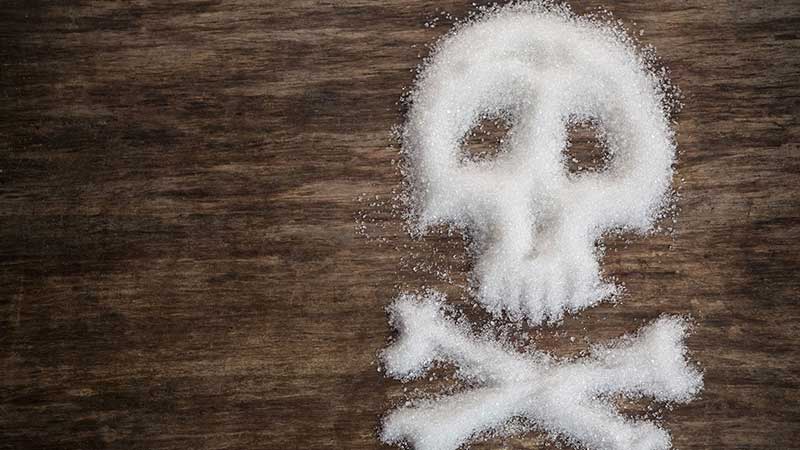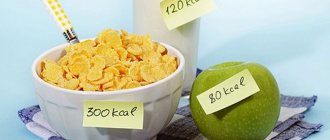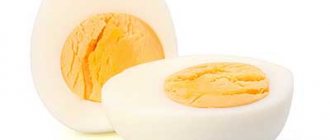“Space diet” by Sergei Sivokho: without denying himself anything, the comedian lost 42 kg in 3 months
You often meet a person who is trying to lose weight in the shortest possible time, who calculates the calories of all the dishes eaten during the day. In order to make life easier for the above-mentioned persons, in this article we will look at an effective universal diet for weight loss with a correctly selected average daily calorie intake.
Since many women trying to lose weight with the help of various diets lead a sedentary lifestyle and are not inclined to “burden themselves” with physical activity, nutritionists began to consider the universal number of calories, thanks to which a person can lose a couple of extra pounds without causing damage health. As a result, the number 1200 was obtained. We will talk more about the principles of such a diet with an approximate menu in the following material.
Calorie calculation for weight loss
Calories are the energy that the body receives from food and then spends on any activity. A person eats foods, and the body uses them to produce energy, which it then supplies to vital organs. Energy is needed for all vital processes: mental work, breathing, heat exchange, heartbeat, and even for movement. Each product has a special chemical composition, but they all consist of the same substances, but in different proportions. So, the components are:
- carbohydrates;
- microelements;
- proteins;
- water;
- vitamins;
- fats.
Why do you need to count calories?
Without following a diet, a person tends to exceed his daily caloric intake, even if he does not eat too much, because the calorie content of all foods is different. Snacks that are not considered a full meal are swallowed and forgotten. In addition, calories are divided into “harmful” and “useful”. By consuming unlimited amounts of them, women have a desire to lose weight with the help of diets, the essence of which is the same - reducing daily caloric intake.
All diets have a common significant drawback - a limited list of products. Even if you have followed a strict diet to lose weight and achieved the desired result, you still have not abandoned your previous eating habits, so they will quickly “ruin” your slimness. Calculating the energy value of foods and the amount of food consumed should not become a temporary diet for you, but a way of life - only constant monitoring and a table will help you always have a beautiful figure and be healthy.

How to count
Having decided to switch to PP and use a calorie counting table for weight loss in everyday life, purchase a diary in which you will record your achievements. When following your daily calorie intake, write down every food you eat during the day, and also set aside a place where you will keep track of your physical activity. The third column of the table will show your weight changes - you should record your morning weight in your weight loss journal.
By comparing your weight loss results, you can adjust your diet. At the same time, focus on the minimum required by the body, and keep in mind that in order to lose weight, it must burn more calories than it received. The required amount is calculated individually for each person, because the condition of the body, the age of the person losing weight, and his physical activity are taken into account. For example, a woman who moves little can eat 2200 kcal per day; for men whose activities are not related to physical activity, the number increases to 2800 kcal/day.
To lose weight, you need to do the calculation a little differently, reducing the permissible daily caloric intake:
- women who do not engage in sports need 1000-1200 kcal/day to lose weight, men 500-600 kcal more;
- women involved in training should consume 2000-2200 kcal per day, men need to add 500 kcal to this number.
Basal metabolism - why are jokes bad?
BMR is the number of calories your body needs to maintain vital functions. This means that if the body does not receive the extremely acceptable norm of nutrients, it begins to prepare for death.
In order to lose weight effectively, you need to subtract from your BMR
(which ensures the normal functioning of the body) 15-20%, depending on how quickly the result you need.
Eating nothing is a very bad idea
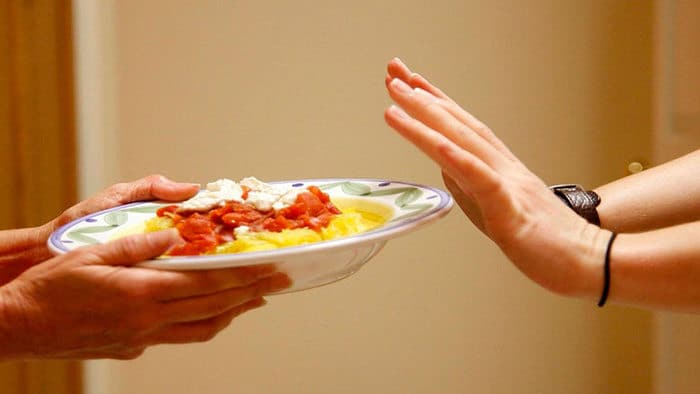
When you decide to lose weight and reduce the caloric intake of your diet by more than 20% of the daily value, the body begins to experience severe stress. To eat, he needs food, which does not come in the right quantity. Metabolism slows down, all metabolic processes are aimed at using energy as economically as possible. The organs need to work, the legs need to move, the head needs to think. Where does he get energy from if not from food? That's right, it becomes its own food.
People who have been in a significant caloric deficit for a long time become less attentive. Due to a lack of vitamins and microelements, their hair falls out, their nails break, and their teeth crumble. Vulnerability to temperature changes increases - any hypothermia provokes colds, and in hot weather their well-being does not allow them to do their usual activities.
Sleep is disturbed, nightmares are more common, the “bruised” state is disturbing, and it is almost impossible to get enough sleep. The body is working hard. That is why it is very important to maintain a healthy balance and eat no more than 20% less than the daily requirement.
Expert opinion
Fetisova Anna Andreevna
Fitness trainer, professional nutrition consultant.
You may ask - what about fat? And fat will begin to decrease when the amount of muscle mass is critical. The sagging folds, which will have to be hidden under clothes, are unlikely to go anywhere unless you catch a couple of hungry faints before that.
What to do if you have already tortured yourself with diets and are looking for a way out? Count calories. To begin with, calculate the need that your body needs for normal functioning. The following formula will help you for this.
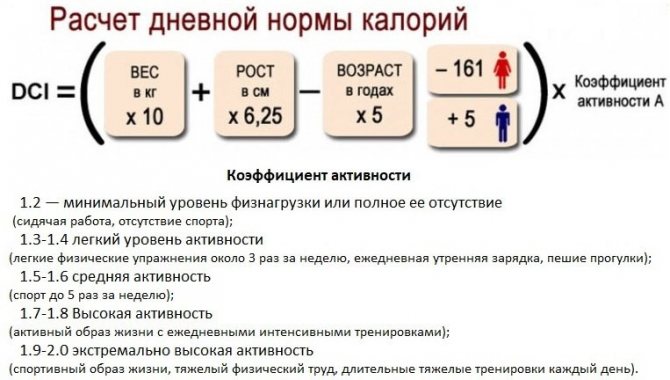
In addition, in many applications your norm is calculated automatically, taking into account age, activity, BMR. But the accuracy of automatic calculations cannot be guaranteed, so you should take the time to check how much your numbers differ from what the program suggests.
How to correctly count calories to lose weight - table
Once you decide to reduce your body weight, you need to control your intake of high-calorie foods. The table of calorie content of weight loss products will become your faithful assistant in creating a menu, but you need to take into account other points:
- Water, tea and coffee have zero calories, but that doesn't include sugar, honey, milk or any other extra ingredients you choose to add to your drink.
- When preparing a complex dish, keep in mind that in order to calculate its energy value, you need the energy value of the products included in the composition.
- When frying, add the calorie content of the product to the calorie content of the oil in which it is fried.
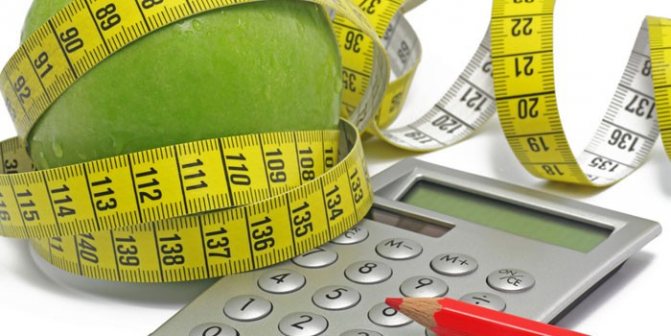
Food calorie table
Knowing your allowable daily calorie intake for weight loss, you can adjust your menu and plan your diet correctly. A calorie counting table for weight loss will help you with this - thanks to it you will find out the composition of dietary fat and the calorie content of food products that are considered the most popular and accessible to everyone. In the table, data on calorie content and composition are displayed per 100 g of product.
| Product name | Calories (kcal) | Squirrels | Fats | Carbohydrates |
| Berries, fruits | ||||
| Orange | 45 | 0,9 | 0,2 | 8,1 |
| Cherry plum | 27 | 0,2 | 0 | 6,9 |
| A pineapple | 49 | 0,4 | 0,2 | 10,6 |
| Apricot | 47 | 0,9 | 0,1 | 10,8 |
| Avocado | 208 | 2,0 | 20,0 | 7,4 |
| Watermelon | 40 | 0,6 | 0,1 | 5,8 |
| Cowberry | 45 | 0,7 | 0,5 | 9,6 |
| Banana | 90 | 1,5 | 0,1 | 21,8 |
| Cherry | 25 | 0,8 | 0,5 | 11,3 |
| Grape | 70 | 0,6 | 0,2 | 16,8 |
| Grapefruit | 30 | 0,8 | 0,5 | 11,3 |
| Pear | 42 | 0,4 | 0,3 | 10,9 |
| Melon | 45 | 0,6 | 0,3 | 7,4 |
| Strawberries | 38 | 0,8 | 0,4 | 7,5 |
| Blackberry | 32 | 2,0 | 0 | 6,4 |
| Cranberry | 33 | 0,5 | 0 | 6,8 |
| Kiwi | 59 | 1,0 | 0,6 | 10,3 |
| Gooseberry | 48 | 0,7 | 0,2 | 12,0 |
| Dogwood | 41 | 1,0 | 0 | 10,5 |
| Lemon | 30 | 0,9 | 0,1 | 3,0 |
| Mandarin | 41 | 0,8 | 0,2 | 7,5 |
| Raspberries | 45 | 0,8 | 0,5 | 8,3 |
| Peach | 45 | 0,9 | 0,1 | 11,3 |
| Currant | 43 | 1,0 | 0,4 | 7,3 |
| Plum | 44 | 0,8 | 0,3 | 9,6 |
| Blueberry | 44 | 1,1 | 0,4 | 7,6 |
| Cherries | 53 | 1,1 | 0,4 | 11,5 |
| Apple | 45 | 0,4 | 0,4 | 9,8 |
| Greens, vegetables | ||||
| Eggplant | 28 | 1,2 | 0,1 | 4,5 |
| Green peas | 75 | 5,0 | 0,2 | 13,8 |
| White cabbage | 23 | 1,8 | 0,1 | 4,7 |
| Broccoli | 28 | 3,0 | 0,4 | 5,2 |
| Brussels sprouts | 12 | 4,8 | 0 | 8,0 |
| Cauliflower | 18 | 2,5 | 0,3 | 5,4 |
| Red cabbage | 27 | 0,8 | 0 | 7,6 |
| Sauerkraut | 28 | 1,8 | 0,1 | 4,4 |
| Zucchini | 18 | 0,6 | 0,3 | 4,6 |
| Boiled potatoes | 82 | 2,0 | 0,4 | 16,7 |
| Potato | 80 | 2,0 | 0,4 | 18,1 |
| Fried potato | 192 | 2,8 | 9,5 | 23,4 |
| Bulb onions | 43 | 1,4 | 0 | 10,4 |
| Green onion | 18 | 1,3 | 0 | 4,6 |
| Red onion | 42 | 1,4 | 0 | 9,1 |
| Carrot | 33 | 1,3 | 0,1 | 6,9 |
| Pickled cucumber | 16 | 2,8 | 0 | 1,3 |
| Fresh cucumber | 15 | 0,8 | 0,1 | 2,8 |
| Parsley | 23 | 3,7 | 0,4 | 7,6 |
| Sweet pepper | 27 | 1,3 | 0 | 5,3 |
| Tomato | 20 | 0,6 | 0,2 | 4,2 |
| Turnip | 23 | 1,5 | 0,1 | 6,2 |
| Radish | 16 | 1,2 | 0,1 | 2,5 |
| Radish | 16 | 1,2 | 0,1 | 3,4 |
| Rhubarb | 13 | 0,7 | 0,1 | 2,5 |
| Asparagus | 20 | 1,9 | 0,1 | 3,1 |
| Beet | 40 | 1,5 | 0,1 | 8,8 |
| Salad | 11 | 1,2 | 0,3 | 1,3 |
| Celery | 12 | 0,9 | 0,1 | 2,1 |
| Dill | 30 | 2,5 | 0,5 | 6,3 |
| Pumpkin | 28 | 1,3 | 0,3 | 7,7 |
| Red beans | 93 | 8,4 | 0,3 | 13,7 |
| White beans | 102 | 7,0 | 0,5 | 16,9 |
| Garlic | 60 | 6,5 | 0,5 | 29,9 |
| Horseradish | 49 | 3,2 | 0,4 | 10,5 |
| Sorrel | 17 | 1,5 | 0,3 | 2,9 |
| Spinach | 216 | 2,9 | 0,3 | 2,0 |
| Nuts | ||||
| Peanut | 551 | 26,3 | 45,2 | 9,9 |
| Almond | 600 | 18,6 | 57,7 | 16,2 |
| Walnut | 650 | 15,2 | 65,2 | 7,0 |
| Pine nut | 620 | 11,6 | 61,0 | 19,3 |
| Cashew | 643 | 25,7 | 54,1 | 13,2 |
| Hazelnut | 670 | 16,1 | 66,9 | 9,9 |
| Pistachios | 556 | 20,0 | 50,0 | 7,0 |
| Eggs | ||||
| Ostrich egg | 118 | 12,2 | 11,7 | 0,7 |
| Quail egg | 168 | 11,9 | 13,1 | 0,6 |
| Chicken egg | 157 | 12,7 | 10,9 | 0,7 |
| Mushrooms | ||||
| Dried mushrooms | 210 | 23,4 | 6,4 | 31,0 |
| White mushroom | 25 | 3,7 | 1,7 | 1,1 |
| Fried mushrooms | 165 | 4,6 | 11,5 | 10,7 |
| Milk mushrooms | 16 | 1,8 | 0,5 | 0,8 |
| Chanterelles | 20 | 1,6 | 1,1 | 2,2 |
| Raincoats | 27 | 4,3 | 1,0 | 1,0 |
| Butter | 19 | 2,4 | 0,7 | 0,7 |
| Honey mushrooms | 20 | 2,2 | 1,2 | 0,5 |
| Boletus | 30 | 3,3 | 0,5 | 3,7 |
| boletus | 30 | 2,3 | 0,9 | 3,7 |
| Dried foods | ||||
| Figs | 290 | 3,1 | 0,8 | 57,9 |
| Raisin | 270 | 2,9 | 0,6 | 66,0 |
| Dried apricots | 290 | 5,2 | 0,3 | 51,0 |
| Kishmish | 310 | 2,3 | 0 | 71,2 |
| Prunes | 290 | 2,3 | 0,7 | 57,5 |
| Dates | 290 | 2,5 | 0,5 | 69,2 |
| Dried apples | 210 | 2,2 | 0,1 | 59,0 |
| Cheeses, dairy products | ||||
| Cow cheese | 260 | 17,9 | 20,1 | 0 |
| Yogurt 1.5% | 51 | 5,3 | 1,5 | 7,5 |
| Kefir 0% | 30 | 3,0 | 0,1 | 3,8 |
| Kefir 1% | 38 | 2,8 | 1,0 | 4,0 |
| Kefir 3.2% | 60 | 2,8 | 3,2 | 4,1 |
| Whole milk | 68 | 3,2 | 3,6 | 4,8 |
| Milk 3.2% | 60 | 2,9 | 3,2 | 4,7 |
| Ryazhenka 6% | 85 | 5,0 | 6,0 | 4,1 |
| Curdled milk | 59 | 2,8 | 3,2 | 4,1 |
| Cream 20% | 300 | 2,8 | 20,0 | 3,7 |
| Cream 10% | 120 | 3,0 | 10,0 | 4,0 |
| Sour cream 20% | 210 | 2,8 | 20,0 | 3,2 |
| Sour cream 10% | 115 | 3,0 | 10,0 | 2,9 |
| Parmesan | 330 | 33,0 | 28,0 | 0 |
| Dutch cheese | 357 | 26,0 | 26,8 | 0 |
| Lambert cheese | 377 | 23,7 | 30,5 | 0 |
| Russian cheese | 371 | 24,1 | 29,5 | 0,3 |
| Processed cheese | 257 | 16,8 | 11,2 | 23,8 |
| Cheddar | 392 | 23,0 | 32,0 | 0 |
| Edam | 330 | 24,0 | 26,0 | 0 |
| Sausage cheese | 278 | 23,0 | 19,0 | 0 |
| Feta | 290 | 17,0 | 24,0 | 0 |
| Curd cheese | 380 | 9,5 | 21,3 | 36,0 |
| Cottage cheese 18% | 226 | 14,0 | 18,0 | 2,8 |
| Low-fat cottage cheese | 80 | 16,3 | 1,0 | 1,3 |
| Bakery products | ||||
| Sugar | 290 | 0 | 0 | 99,7 |
| Rye flatbread | 375 | 8,0 | 18,3 | 44,2 |
| Drying | 330 | 11,3 | 4,4 | 70,5 |
| Butter pastries | 300 | 20,0 | 6,0 | 35,0 |
| Wheat bread | 265 | 8,1 | 1,0 | 48,8 |
| Bread Darnitsky | 206 | 6,6 | 1,1 | 41,0 |
| Rye bread | 210 | 6,6 | 1,2 | 34,2 |
| Cereals, legumes, flour | ||||
| Beans | 57 | 6,0 | 0,1 | 8,5 |
| Green peas (canned) | 55 | 3,6 | 0,1 | 9,8 |
| Green peas (fresh) | 73 | 5,0 | 0,2 | 13,8 |
| Dried green peas | 298 | 20,5 | 2,0 | 53,3 |
| Rye flour | 347 | 10,7 | 1,9 | 56,8 |
| Wheat flour | 348 | 9,2 | 1,2 | 74,9 |
| Semolina | 340 | 10,3 | 1,0 | 73,3 |
| Buckwheat | 346 | 12,6 | 3,3 | 62,1 |
| Oatmeal | 374 | 1,3 | 6,1 | 59,5 |
| Pearl barley | 342 | 9,3 | 1,1 | 73,7 |
| Wheat groats | 352 | 11,5 | 1,3 | 62,0 |
| Barley grits | 343 | 10,4 | 1,3 | 66,3 |
| Cornflakes | 369 | 6,9 | 2,5 | 83,6 |
| Pasta | 350 | 11,2 | 1,6 | 68,4 |
| Cereals | 305 | 11,9 | 7,2 | 69,3 |
| Rice | 337 | 7,1 | 0,7 | 78,0 |
| Soybeans | 395 | 34,9 | 17,3 | 17,3 |
| Lentils | 310 | 21,6 | 1,1 | 48,0 |
| Beans | 93 | 8,4 | 0,3 | 13,7 |
| Barley flakes | 315 | 9,38 | 3,6 | 79,4 |
| Seafood | ||||
| Chum salmon caviar | 245 | |||
| Granular caviar | 250 | |||
| Pollock caviar | 130 | |||
| Fried carp | 145 | |||
| Carp | 46 | |||
| Chum salmon | 157 | |||
| Canned fish in its own juice | 120 | |||
| Canned fish in oil | 320 | |||
| Crabs | 70 | |||
| Shrimps | 85 | |||
| Bream | 48 | |||
| Smoked salmon | 385 | |||
| Fried salmon | 145 | |||
| Sea kale | 16 | |||
| Pollock | 70 | |||
| Navaga | 44 | |||
| Cancers | 75 | |||
| Perch | 95 | |||
| Stellate sturgeon | 137 | |||
| Atlantic herring | 57 | |||
| Salaka | 98 | |||
| Zander | 43 | |||
| Sprats in oil | 250 | |||
| Cod | 59 | |||
| Pike | 41 | |||
| Meat products | ||||
| Ham | 365 | |||
| Goose | 300 | |||
| Brisket | 475 | |||
| Fried beef | 170 | |||
| Beef stew | 180 | |||
| Turkey | 150 | |||
| Korean | 430 | |||
| Smoked sausage | 380 | |||
| Boiled sausage | 250 | |||
| Rabbit meat | 115 | |||
| Boiled chicken | 135 | |||
| Fried chicken | 210 | |||
| Beef liver | 100 | |||
| Kidneys | 66 | |||
| Sausages | 235 | |||
| Pork chop | 265 | |||
| Duck | 405 | |||
| Pork stew | 350 | |||
| Heart | 87 | |||
| Sausages | 160 | |||
| Language | 165 | |||
| Veal | 90 | |||
| Fats, sauces | ||||
| Rendered fat | 930 | |||
| Ketchup | 80 | |||
| Creamy mayonnaise | 745 | |||
| Mayonnaise | 625 | |||
| Sandwich margarine | 670 | |||
| Margarine for baking | 675 | |||
| Creamy margarine | 745 | |||
| Mayonnaise light | 260 | |||
| Ghee | 885 | |||
| Corn oil | 900 | |||
| Sunflower oil | 900 | |||
| Butter | 750 | |||
| Soybean oil | 900 | |||
| Olive oil | 824 | |||
Calculator
A calorie chart helps, but many people find it tedious to use. For this reason, those who are losing weight should take a closer look at a reference book indicating the calorie content of ready-made meals, or popular online calculators. Electronic counters can be used not only to count calories, but also dietary supplements, vitamins and minerals in a certain dish. The online program helps calculate how many beneficial components meat, vegetables, fish or fruits lose during cooking.
Weight loss stories: negative calories
Is it possible to lose weight by counting calories if it is counting negative calories? It’s a completely logical thing: if there are foods with positive calories, then there should also be ones with negative ones.
Products with a negative calorie content are those whose consumption is more expensive than the calorie content of the product itself. For example, a medium-sized carrot has about 10 calories. A person must spend 12 calories to digest these carrots. It turns out that the product brought the person -2 kcal. That is, the body spent all the calories eaten and even more.
The truth is the truth, but don’t forget - in order not to die, you need to eat. Your menu should contain as many dishes as your body needs. Otherwise, no one will appreciate your efforts - in the grave this is no longer relevant.
Calculation of daily calorie intake for weight loss
How many calories you can consume per day can be easily calculated. You just need to multiply the value of your weight in kg by 24 - the resulting number will be the rate of calorie consumption for the body at rest (due to this amount of energy, it will ensure the functioning of the processes necessary for human life). Even when calculating the daily calorie intake for weight loss, you need to take into account the recommended dose of BJU: the daily menu should consist of 20% fat, 40% carbohydrates and 40% protein.
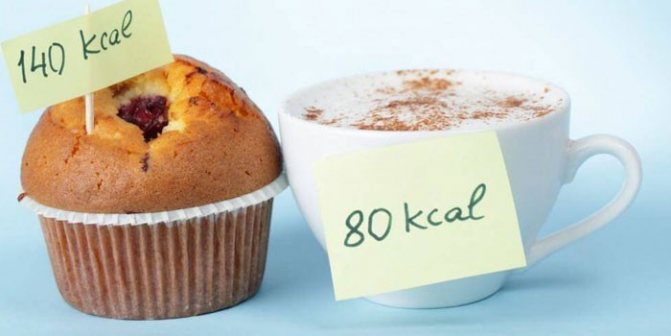
Physical activity rate
The amount of daily calories depends on how active a person is. In this case, the number of acceptable norms must be multiplied by a coefficient expressing motor physical activity. This indicator has an average value:
- 1.2 – for people who are very overweight or lead a completely inactive lifestyle;
- 1.4 – for those who play sports at least 3 times/week;
- 1.6 – for people working in an office and those who rarely do physical labor;
- 1.5 – for those who train daily and do physical labor.
Basal metabolic rate
A calorie counting table will help you lose weight, but to calculate your daily calorie intake, you need to take other values into account. So, to maintain weight, your basal metabolic rate needs to be multiplied by your activity ratio. To lose weight, the daily norm needs to be reduced: for women to 1200 kcal, for men - to 1800 kcal. To lose weight, you need to either reduce your calorie intake by eating less or increase your physical activity. It is worth noting that before increasing the load when losing weight, you need to calculate how many calories you can eat before training.
Weight loss stories: you can’t eat at night
Different people have different biological rhythms. Some people are actively awake from 6 a.m., while others drink their third cup of coffee at 12 p.m. to wake up.
Do you recognize yourself or your surroundings? So, there are people who absolutely cannot live without breakfast, and there are people who definitely need to eat before bed. What to do in the second case? And what about breakfast - the most important meal of the day?
You will be surprised, but there will be no weight gain from carbohydrates at night if you invest in your calorie
.
At night, the body sleeps, but the lungs breathe, blood circulates, and the stomach digests food.
Everything works, nothing stagnates or wanders anywhere. Another thing is to reduce the load on the body and not take away quality sleep, try to have dinner 2-3 hours before bedtime.
Calorie diet
For those who have problems with weight, nutritionists have developed a special system - calculating the calorie content of consumed foods according to a table. While on this diet, you don’t need to give up your favorite delicious foods, because the system’s design is as simple as possible - you just need to reduce the number of servings and their volume. Reviews of this diet suggest that you can easily lose 4 kg of excess weight in a month (depending on your initial weight). The diet is absolutely safe for health, provided that you do not reduce your daily caloric intake below the minimum threshold of 1200 kcal.
A calorie-counting diet won't make you hungry. You can see this by looking at its sample menu:
- breakfast - 200 g of salad (fresh cabbage and carrots), seasoned with 0.5 tsp. vegetable oil, a piece of boiled sausage (50 g) or chicken cutlet, bread and unsweetened tea;
- snack – 100 g of citrus jelly, a glass of lemon jelly;
- lunch – 150 g of bean soup, 150 g of vegetable roast with pork, a cup of rowan tea, 100 g of potato cookies;
- afternoon snack – a glass of kvass made from the extract, 2 loaves of bread covered with a thin layer of apricot jam;
- dinner – 100 g of buckwheat, 100 g of boiled chicken fillet, a cup of tea with an apple;
- at night - a glass of low-fat kefir.
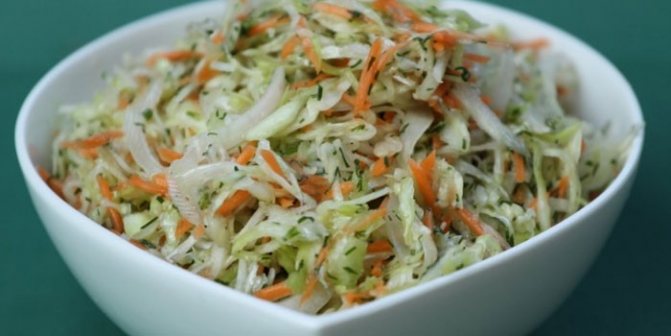
How to choose calorie-rich diet recipes
A calorie table for weight loss may not help you achieve your goal if you systematically break the rules. So, when you are planning to count calories, you should:
- Limit your fat intake. Animal fat has twice the calorie content of carbohydrates. If the menu contains no more than 30% fat, then the body does not require an increase in the dose of carbohydrates and protein, due to this the calorie content of the diet becomes 10% less.
- Minimize your sugar intake. Any type of sugar or its substitute increases appetite, which causes a person to overeat, which is unacceptable when losing weight. A healthy menu should contain no more than 20 g of sugar/day.
- Increase your consumption of fiber (found in cereals, fruits, vegetables) and pectins. This kind of food is the best for weight loss - it is digested more slowly and fills you up faster.
Weight loss stories: sugar is evil
As we know, we have “anti-sugar” marathons everywhere. We are fed stories that sugar is a sweet drug, that it causes addiction, obesity, heart attacks and all the troubles in life only from it. From a physiological point of view, it is quite stupid to listen to these fairy tales.
In fact, everything is a little different. If a person suffers from obesity, this is not the result of sugar, not glucose, but the result of his poor lifestyle in general. When the body consumes more energy than it can expend, it stores the remainder as fat.
And sugar is the same product as buckwheat porridge. It can be eaten, it does not affect metabolism, and in itself it is not to blame for anything. Another thing is that sugar is a useless but tasty thing that you want to eat a lot of. But here the questions are not for sugar, but for you.
